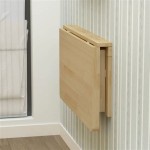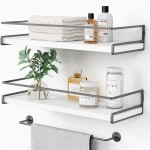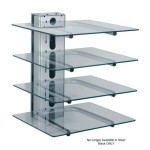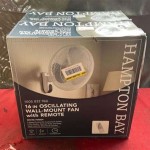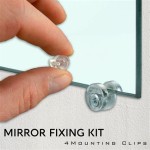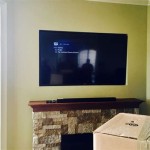Bose Solo 5 TV Sound System: Optimizing Audio with Wall Mounting
The Bose Solo 5 TV sound system is designed to enhance television audio quality, providing a clearer and more immersive listening experience compared to standard built-in TV speakers. While the system is designed for simple placement on a media console, wall mounting offers several advantages in terms of aesthetics, space optimization, and sound projection. This article details the considerations, benefits, and practical steps involved in wall mounting the Bose Solo 5 system.
The Bose Solo 5 is a single soundbar designed to be compact and unobtrusive. It aims to improve dialogue clarity and overall audio fidelity, making it suitable for small to medium-sized rooms. Understanding the product's inherent limitations and strengths is essential before committing to a specific mounting strategy. The soundbar’s design focuses on simplicity and ease of use, which extends to the mounting process as well.
Benefits of Wall Mounting the Bose Solo 5
One primary advantage of wall mounting is space saving. In smaller living areas or bedrooms, freeing up surface space on media consoles or shelves can be a significant benefit. Wall mounting allows the soundbar to be positioned directly beneath or above the television, creating a cleaner, more streamlined look. This is particularly appealing in minimalist design schemes where clutter is minimized.
Furthermore, wall mounting allows for optimal sound projection. Positioning the soundbar at ear level when seated provides a more direct and accurate soundstage. When placed on a low console, audio may be muffled or partially blocked by furniture. Wall mounting ensures that the sound is projected unimpeded into the listening area, improving overall clarity and immersion.
Aesthetically, wall mounting can significantly enhance the overall look of a home entertainment setup. Hiding wires and keeping the soundbar flush against the wall creates a more professional and polished appearance. This can be particularly important in modern homes where visual appeal is a key consideration.
Considerations Before Wall Mounting
Before proceeding with the wall mounting process, several factors must be considered. The first is the type of wall material. Drywall, plaster, brick, and concrete each require different mounting hardware and techniques. Identifying the wall type is critical for selecting appropriate anchors and screws that can support the weight of the soundbar securely.
Secondly, the weight capacity of the wall mount must be sufficient. The Bose Solo 5 is relatively lightweight, but it's essential to choose a mount that can handle at least twice the soundbar's weight to ensure stability and prevent accidental falls. Overloading a wall mount can lead to damage to the wall, the soundbar, or both.
Thirdly, cable management is a crucial consideration. Wall mounting often involves running power and audio cables through the wall to conceal them, creating a cleaner look. Planning the cable routing and ensuring that there are accessible pathways for the cables is essential before starting the installation. In some cases, professional cable installation may be necessary to meet building codes and ensure safety.
Finally, the height and positioning of the soundbar relative to the television are important. Ideally, the soundbar should be positioned as close to the television as possible, either directly above or below it. The height should be adjusted so that the sound is projected towards the listener's ear level when seated. Incorrect positioning can negatively impact the audio experience.
Necessary Tools and Materials
To successfully wall mount the Bose Solo 5, several tools and materials are required. These include:
*Wall Mount Kit: While Bose does not include a wall mount with the Solo 5, there are third-party options available. Ensure the chosen mount is compatible with the soundbar's mounting points and can support its weight.
*Drill: A power drill is essential for creating pilot holes and securing screws into the wall. A drill with variable speed control is preferred to prevent damaging the wall material.
*Screwdriver: Both Phillips head and flathead screwdrivers may be needed, depending on the screws used in the wall mount kit.
*Level: A level is crucial for ensuring that the soundbar is mounted straight and even. A bubble level or a laser level can be used.
*Stud Finder: A stud finder is helpful for locating wall studs, which provide the strongest support for mounting the soundbar. If studs are not accessible, appropriate wall anchors must be used.
*Pencil: A pencil is needed to mark the locations for drilling holes and ensuring accurate placement.
*Measuring Tape: A measuring tape is essential for determining the desired height and position of the soundbar relative to the television.
*Wall Anchors: Wall anchors are necessary if mounting the soundbar between studs. Choose anchors that are rated to support the weight of the soundbar and are appropriate for the wall material.
*Cable Management Solutions: These may include cable ties, cable sleeves, or in-wall cable management kits to conceal and organize the cables.
Step-by-Step Wall Mounting Procedure
Prior to starting, read and understand the instructions provided with the chosen wall mount kit. These instructions will provide specific guidance and warnings relevant to that particular mount. Safety goggles should be worn throughout the mounting process to protect the eyes.
The first step is to determine the desired location for the soundbar. Use a measuring tape to determine the optimal height and position relative to the television. Mark the location with a pencil.
Next, use a stud finder to locate wall studs in the desired mounting area. If a stud is available, mark its location clearly. If a stud is not accessible, select appropriate wall anchors that are rated for the weight of the soundbar and the type of wall material. Mark the locations for the wall anchors according to the wall mount kit's instructions.
Using a drill, create pilot holes at the marked locations. The size of the pilot holes should be appropriate for the screws and wall anchors being used. Ensure that the pilot holes are deep enough to accommodate the full length of the screws.
Attach the wall mount bracket to the wall using screws and wall anchors. Ensure that the bracket is level and securely fastened to the wall. Double-check the stability of the bracket before proceeding.
Connect the power and audio cables to the soundbar. Route the cables through the wall, if desired, using cable management solutions. Be sure to leave enough slack in the cables to prevent them from being strained or damaged.
Attach the soundbar to the wall mount bracket, following the instructions provided with the wall mount kit. Ensure that the soundbar is securely fastened to the bracket and cannot be easily dislodged.
Finally, test the soundbar to ensure that it is functioning properly. Adjust the volume and sound settings to optimize the audio experience. Conceal any remaining cables using cable management solutions.
Troubleshooting Common Issues
One common issue is instability of the wall mount. If the wall mount feels loose or wobbly, double-check the screws and wall anchors to ensure that they are properly tightened. If necessary, use larger or more robust wall anchors to provide additional support.
Another issue is cable management difficulties. If cables are difficult to route through the wall, consider using external cable management solutions, such as cable sleeves or raceways, to conceal the cables. Alternatively, consult a professional installer for assistance with in-wall cable routing.
Sound quality problems can also arise.If the sound quality is not as expected, double-check the soundbar's position and angle. Adjust the height and angle of the soundbar to optimize the sound projection. Also, ensure that the soundbar is properly connected to the television and that the audio settings are correctly configured.
Alternative Mounting Options
While wall mounting is a popular option, alternative mounting methods are available for the Bose Solo 5. One alternative is to use a soundbar shelf or bracket that attaches to the television's mounting points. This option allows the soundbar to be positioned directly beneath the television without requiring separate wall mounting.
Another alternative is to place the soundbar on a dedicated soundbar stand. These stands are designed to support the weight of the soundbar and provide a stable platform for optimal sound projection. Soundbar stands are particularly useful for situations where wall mounting is not feasible or desirable.
Finally, some users may choose to simply place the soundbar on a media console or shelf without any additional mounting hardware. While this option is the simplest, it may not provide the optimal sound projection or aesthetic appeal compared to wall mounting or other mounting methods.

Introducing Solo 5 Tv Sound System Bose

Wb 120 Wall Mount Kit For Bose Solo 5 Soundbar Sound Bar Under

Bose Solo 5 Tv Sound System

Bose Tv Speaker Soundbar Wall Mount Bracket Black Soundbass

Fix Your Soundbass Bose Solo 5 Soundbar Wall Mount Bracket To The Attachment Of

Bose Solo 5 Review What Hi Fi

Meet The Bose Solo 5 Tv Sound System Best Blog

Review Bose Solo 5 Soundbar Iaa

Bose Solo 5 Tv Sound System Sharperimage Com

Bose Solo 5 Tv Sound System At Crutchfield Canada

